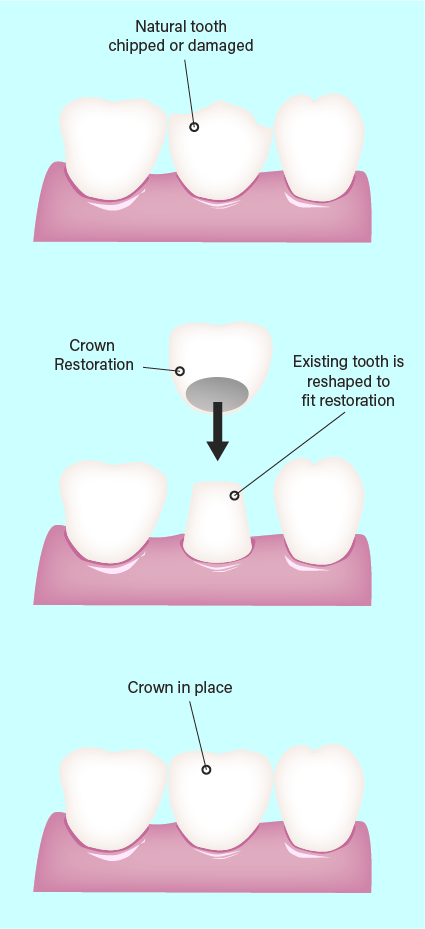Dental Crowns & Bridges

Dental crowns are a common tool used to treat various issues in dentistry. If your dental professional suggests a crown for one or more of your teeth, it’s important that you understand what these devices are, how they help, and how to best look after them.
What are crowns?
Unlike the name suggests, a crown will actually cover your entire tooth – not just the top of it. A crown is essentially a hollow tooth that sits over your existing tooth, fitting it like a glove and looking just like a natural tooth.
Once your dentist has fitted you for a crown, it will look, feel, and work just like a normal tooth, so you will quickly forget that it’s there.
The procedure for having a crown attached usually takes two visits. During the first visit, your dentist will file your natural tooth down, then take a mold of it. He or she will fit a temporary crown to the tooth until the second appointment. During your next visit, the dental professional will remove the temporary crown and replace it with a permanent one that has been custom-made for your tooth. The crown will be attached with a special adhesive and your dentist will double check to make sure that it feels good before you leave.
Your dentist will talk you through the options for crowns, as there are several. For example, gold crowns are extremely durable but do not look natural, so are often used on back teeth. However, porcelain crowns look the most natural but are less durable, so are commonly used on front teeth that you can see. Another option is composite crowns, which don’t chip as easily as porcelain. The final decision will come down to both the placement of the tooth and your own preferences, and it’s always important to take your dentist’s advice into consideration.
Crowns are also often used as anchors when getting a bridge to replace a missing tooth.
Why might you need a crown?
Crowns are put in place for a number of reasons. Generally, a crown is used when the tooth is damaged in some way, but can still be saved. The crown will be placed over this tooth to make it fully functional, and to give it a more natural appearance.
Common reasons for requiring a crown include having a large filling or root canal and needing this cap to protect the tooth, or having a broken tooth that’s otherwise still healthy. You may also receive a crown on a tooth that is too discoloured for the usual whitening options, or one that is misshapen.
How do you look after a crown?
Once a crown is affixed to your natural tooth, you will need to look after it as best you can to ensure it lasts as long as possible.
A crown may not be quite as strong as your natural teeth, so it’s important to avoid using it to bite down on hard items – this is especially true if you have a porcelain or composite crown. Otherwise, you will clean your crown in the same way you would your normal teeth. This means brushing carefully twice per day, and flossing around the crown to remove any food debris. You will also need to maintain regular dental visits, during which your care provider will cast an expert eye over the crown to ensure it’s still in good condition.
With proper care, a crown can last for a lifetime. Should it come loose or fall out, your dentist will offer a solution such as simply fitting a new one.
If you think you need a crown or bridge, contact Palmerston Dental Surgery today, on 08 8932 1544.

